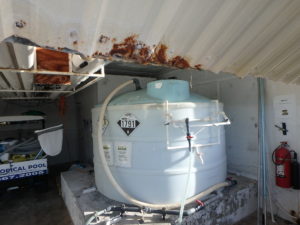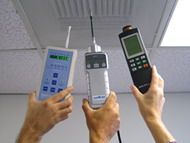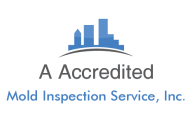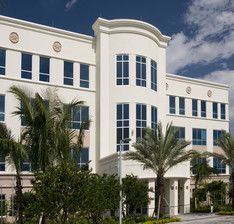 VOC Testing
VOC Testing
At A Accredited Mold Inspection Service, Inc. We Conduct VOC Testing and Consultation in Commercial Buildings and Homes.
Much of our VOC testing has been in commercial buildings where workers complain of health issues that appear to be related to chemicals and odors.
We also offer mold inspections and allergen testing. Several commercial building VOC testing case studies are listed below. These are all examples of our work.
We have done VOC testing since 2003 so if you are in need of VOC testing in a commercial building give us a call.
1-888-381-6651.
Chemical Testing in A Marine Biology Lab Where Acids Diminished Air Quality and Caused Corrosion.

Chlorine causes health complaints and corrosion but is often not detected by the lab in samples collected during VOC testing. That is why an interview, and an inspection are important.
In a Boca Raton area marine biology lab the supervisor was complaining of air quality issues, and unusual amounts of corrosion. The workers were all intelligent scientist and students doing important work to protect the earth’s dwindling natural resources. However, they could not figure out why metal in some areas of the lab was corroding at very alarming rates. The corrosion was quite severe. Our consultant knows from experience that several compounds such as acids, salts, and chlorine, in the air can cause accelerated rates of corrosion. Above is an image of a chlorine storage tank our consultant encounter while doing air quality testing in Key Largo. Note the chlorine gas induced corrosion on metal above the storage tank.
The Problem
Back to the research lab story. Our consultant asked many questions about the chemicals being used in the lab and looked around and made a telling discovery. The lab staff were using strong acids stored in a plastic container. I Don’t remember what type of acid, nor what the acid was for. I think it was for sterilization. The corrosion was worse the closer one got to the acid containing vessel. Vent hood components on the roof were also severely corroded as well. The hood would extract the fumes from the lab then become rusted.
It came as a total surprise to the research scientist and grad students that the cause of corrosion was the acid they depended on for work. I informed them that the acid fumes in the air were all that were needed to cause the air quality problems and rust.
It was probably around that time that sulfur containing acidic gases from Chinese Drywall was causing similar corrosion problems in homes copper pipes and wires. I also informed them to cover the acid better and to use proper ventilation closer to the stored acid.
Chemical testing, just like mold testing has its limitations. Testing did not pick up acid as testing for VOC’s does not pick up acid. It took visual inspections, analytical thinking, and experience, to solve the riddle.
Even though these were grad students and scientists, it took a bit of convincing before they believed that acid fumes could cause the corrosion they were experiencing.
VOC Testing in a Building Where Solvents Were Used to Clean Lenses and Sensitive Equipment.
In one commercial building in Miami high quality optical lenses were being manufactured. The occupants to our inspector of health problems. Management requested indoor air testing in the building. During the air test it was observed that the facility workers used large amounts of a solvent known as acetone to clean the lenses. Acetone is often the active ingredient in nail polish remover. It is a potent chemical and acetone can cause serious health problems at high levels. The client was informed that the workers must use proper ventilation and protective gear. It seems that were not using much ventilation at all! In such cases workers must follow all applicable government regulations such as OSHA regulations.

Indoor Air Quality Testing Tools used during VOC testing in commercial buildings and in homes. The one in the center is a Photoionization detector like the one used during the investigation mentioned in this article.
VOC Testing In A Building Where Vitamins and Supplements Are Manufactured.
In multiple cases I have conducted indoor air quality testing in commercial buildings where health supplements, health foods, or vitamins were being manufactured. In such cases levels of VOC’s are sometimes high. A Photo Ionization Detector capable of detecting levels of VOCs to the parts per billion can be used to pinpoint the source. The actual vitamins or other similar supplements were releasing high levels of VOC’s. The types of VOC’s were obviously not acetone, toluene, benzene, formaldehyde, or other scary compounds. The compounds being released were more closely related to the less problematic aromatic compounds released by lemons and flowers and other natural producers of odors. In such cases air dilution and ventilation are recommended.
 Inspection In a Massive Hospital’s Neo-Natal Ward.
Inspection In a Massive Hospital’s Neo-Natal Ward.
Our inspector once inspected a massive hospital building complex where unidentifiable odors were present in the neo-natal intensive care unit. Sensitive, already ill newborn babies were being exposed to an unknown chemical. As you know, children are more sensitive to air quality related health problems than adults. Their lungs and developing brains in particular can be quite sensitive to indoor pollutants. Two previous testing firms could not locate the source of odors via air testing. Air testing for chemicals, mold, and allergens, can very often have limitations. That is why the two previous IAQ testing consultants found nothing unusual in the air. It was not the lack of a problem; it was that tests do not pick up everything. And this is why an interview, a visual inspection, and experience are so important for commercial IAQ consultants.
The clients all described the odor differently. They said the odor was like sewer gas, mold, dead fish, or dead seaweed washed up on the beach. Our inspector found the odor to be similar to antifreeze.
The Smelly Chemical Contaminate Was Located by Our IAQ Investigator.
Our mold and air quality investigator discovered that a antifreeze like chemical called Ancosteam was used to deter corrosion in the buildings steam pipes. The substance was stored in 55-gallon drums three hospital buildings away from the sick infants. This substance in the 55-gallon drums had the exact same antifreeze odor as was present in the neonatal area. Our IAQ Investigator had no doubt that the substance he smelled in the barrels was the same substance he smelled in the infant ward three buildings away.
How Did the Fumes Travel to a Location Three Buildings Away?
The massive network of pipes was carrying the substance from the 55-gallon drums in the engineering plant building to the infant ward three buildings away. The pipes were releasing the antifreeze/ anti corrosion type substance when steam was used to sterilize medical equipment. It was also released when steam was released in the laundry area. The substance was lighter than air and the inspector used his nose and a ladder to trace the fumes from the gases release point. The steam release point was in the steam sterilization autoclave room, and the laundry room. It was traced to the infant neo natal ward down the hall. The fumes were like a lighter than air river of odor clinging to the high ceilings and flowing down the hall to the neo-natal care unit of the hospital.
The Likely Causative Defect
The Ancosteam was not supposed to be inside the steam pipes, it was supposed to be in the water pipes only. How did the Ancosteam get from the water pipes into the hospital’s steam pipes? It likely did in the same way carbon monoxide enters some homes, via cracked heat exchangers. The chemical Ancosteam was intentionally injected into water pipes and heat exchanger where it was supposed to be. It likely leaked out of cracked heat exchanger pipes housed inside the engineering buildings steam pipes. Now that the substance leaked from the heat exchangers the chemical was free to enter the steam pipes where the chemical was not supposed to be. The Ancosteam contaminated water and steam would spray out of nozzles in the steam sterilization room and laundry room. These steam use areas were near the infant intensive care ward.
I informed the building engineer to have the heat exchanger coils inspected and that they would very likely be found to be cracked and leaking. Such coils would need to be replaced to solve the indoor air problem in the massive commercial building.
Printers and Other Office Equipment Suspected of Contributing to Air Quality Problems in Commercial Buildings.
Printers are a common source of ozone and ultra fine particles in offices. Ultrafine particles and ozone can cause indoor air quality problems and health complaints. We have done inspections in Palm Beach and Broward County commercial buildings including a military contractors building in the Ft Lauderdale area. We also did one in a Town Hall building near Boynton Beach. In some of the above cases ozone odors were elevated and it was suspected that the printers were releasing too much ozone into the air. Such was deduced based on detecting ozone odors near printers.
Chemical Testing in A Martin County Printing Facility
We have also done VOC testing in two different commercial buildings in Martin County. These were advertising and printing facilities where workers were complaining of typical VOC exposure type symptoms.
The people complaining were not the print shop workers working with inks and solvents. In fact, the workers using the chemicals in the back printing warehouse were not at all alarmed by the presence of chemicals. The people complaining were the nearby office workers in a different area. Sounds strange but this was actually a textbook example of people working with chemicals in commercial buildings not complaining, but nearby office workers complaining about the very same chemicals.
Why Were the Print Shop Workers Who Worked with Chemicals Not Complaining?
- This is not the first time something like this has happened. This unusual situation is well documented in the indoor air quality testing field. The print shop workers knew what they were smelling thus, were unalarmed by chemical odors.
- The printing area was populated by young workers in good health, and without allergies, asthma, or chemical sensitivity. Thus, they were not sensitive to chemicals in the air. This is why they were willing to work in such a polluted indoor environment.
- On rare occasions, some print shop area workers would feel a little affected. When this occurred they understood what was happening and instead of becoming alarmed they would take corrective actions. They would simply put on a respirator, or they would go out for fresh air. So, the workers with the most exposure were not complaining about odors or reactions to chemical exposure. It was the office staff who complained. It took more than chemical testing in this commercial building to solve the mystery. Solving it required understanding that office workers sometimes complained more about chemicals than the people working with the chemicals.
Using Smoke to Trace the Flow of Air and My Conclusions
I conducted some air flow testing with a small smoke producing device called a smoke pen. Air from the printing area was being sucked into the office worker’s areas. The air was flowing under a door with a missing door gasket.
As a result, the elevated levels of chemicals in the office worker’s area caused alarm and complaints among the office staff who were not physically, or mentally prepared to deal with such unexpected fumes. In fact, they were totally unaware that chemical levels would be so high in their work area. Testing confirmed elevated VOC levels in the office area air.
In my report I informed management that air pressure differential was causing chemical fumes to be sucked into unexpected areas of the commercial building. That this could be rectified with proper vent hood use. Proper vent hood use would stop air from flowing into the offices. In addition, vent hood use would also remove many of the indoor pollutants from the printing areas air. I also recommended that gaskets under the door between the printing area and the office area. In such cases, workers must follow all applicable government regulations such as OSHA regulations.
A Accredited Mold Inspection Service
Call Us We Can Help
If your workers are complaining about air quality-related health issues that appear to be related to time spent indoors don’t ignore them. IAQ testing in your building may be beneficial.
Give us a call and let us try and help find the problem.
1-888-381-6651
Palm Beach – Dade – Martin – St Lucie – Monroe – and
Broward Counties
Stuart, Port St Lucie, Fort Perce, Jupiter, Palm Beach Gardens, West Palm Beach, Boynton Beach, Boca Raton, Ft Lauderdale, Weston, Miami, The Florida Keys






